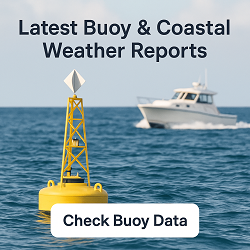Cannelton, WV Weather Forecast and Current Conditions (25036)
Current Conditions From Nearby Station

Feels Like 64°F
at
Current Conditions From Nearby Station

Feels Like 64°F
at
Point Forecast at a Glance







This Date in Weather History
1977 - The temperature at Wichita Falls, TX, soared to 108 degrees to establish a record for September.
More on this and other weather history
Cannelton 7 Day Weather Forecast Details
Tuesday Sep 30

Day: Mostly cloudy, with a high near 80. Northeast wind around 3 mph.

Night: Areas of fog after 3am. Partly cloudy, with a low around 54. Northeast wind around 2 mph.
Wednesday Oct 1

Day: Areas of fog before 10am. Sunny, with a high near 83. Northeast wind 1 to 7 mph.

Night: Mostly clear, with a low around 53. East wind 2 to 6 mph.
Thursday Oct 2

Day: Mostly sunny, with a high near 78. Southeast wind around 7 mph.

Night: Partly cloudy, with a low around 49.
Friday Oct 3

Day: Sunny, with a high near 80.

Night: Mostly clear, with a low around 50.
Saturday Oct 4

Day: Sunny, with a high near 82.

Night: Mostly clear, with a low around 52.
Sunday Oct 5

Day: Sunny, with a high near 83.

Night: Mostly clear, with a low around 57.
Monday Oct 6

Day: Mostly sunny, with a high near 83.

Night: Partly cloudy, with a low around 59.
Sun & Moon Monthly
Sunrise 7:21 AM
Sunset 7:11 PM
Last Light 7:37 PM
Moonset ------

Contiguous United States Extremes
Mon's High Temperature
101 at 16 Miles Southwest Of Tecopa, CA
Mon's Low Temperature
23 at 32 Miles West-southwest Of Bynum, MT
Weather Folklore
Birds flying low, Expect rain and a blow.
Current subscribers - login to your ClearSky account
About Cannelton, West Virginia
Cannelton is an unincorporated community in Fayette County, West Virginia, United States. Cannelton is 1 mile (1.6 km) northeast of Smithers, along Smithers Creek. Cannelton has a post office with ZIP code 25036. The community was named for the deposits of cannel coal in the area.
Cannelton was established in 1849. Cannel coal was discovered in 1848. Ben Burdette, who was working on Col. Aaron Stockton lumber enterprise on the mountain, discovered cannel coal. Cannel coal was discovered to have a very high oil content and that made it very valuable. Col. Aaron Stockton started mining cannel coal and shipping it on the Ohio and Mississippi Rivers. It was the first established town in Montgomery-Smithers vicinity. The first post office was established in 1876.
Content from Wikipedia, licensed under CC BY-SA 3.0.
How We Provide Better Local Weather
Current conditions: We use the nearest available station to your location - including professional MESONET/MADIS and local weather stations - often miles closer than regional airports.
Forecasts: National Weather Service point forecasts predict for your specific area, not broad regional zones, making them far more relevant to your location.

